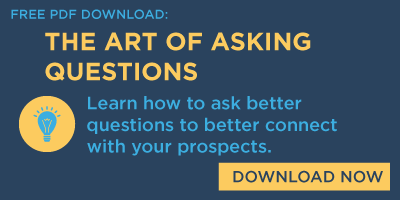
In sales, you need to understand the difference between an objection and an objective. Here are the four most common customer objections that a salesperson will encounter.
- Price
- Need
- Trust
- Time
If a salesperson is being bombarded by these four questions throughout their initial meeting, then they most likely have more work to do.
Simply put, the salesperson needs to spend more time preparing for the meeting, researching the client, and developing insightful questions to build trust and confidence with the buyer. Objections are easy to overcome if you've done your homework prior to your customer needs analysis meeting.
4 Ways To Avoid Objections in the Sales Process
A salesperson can often lose sight of the objectives of a customer needs analysis meeting. In order to avoid a flurry of objections, as outlined above, follow these key steps.
1. Research the Customer
Prior to your meeting, research the customer so you have a greater understanding of what they do. In addition to researching the company, research the buyer to learn key insights that you can share during your customer needs analysis.
Buyers and decision-makers like to know that the salesperson has done their homework on their company and on them personally. This step will build confidence and trust with the potential client.
2. Uncover Needs and Challenges
Focus on the objective of a customer needs analysis, which is to uncover their needs and challenges that you can help the client solve. Use your research in step one to develop insightful questions to uncover these needs and explore them further.
3. Create Mini Closes
During your customer needs analysis, remember to ask probing questions and listen to the client. Show the client that you're engaged by asking them to clarify or restate what they just told you.
Follow up with these clarifying questions with mini closes. The goal of a well-executed customer needs analysis is to get the customer to say yes at least 10 times during your meeting. The more the customer says yes during the customer needs analysis, the less objections you'll encounter during your proposed recommendations.
4. Ask Questions
If a client asks you a question during a customer needs analysis about how you can solve for the need they've just described, be prepared to handle these questions and prevent them from becoming an objection.
For example, if the client asks you how your company would solve a particular need, as a salesperson simply reverse their question and ask them how they've solved that need in the past.
You'll be amazed at what you'll learn by simply asking questions. In most cases, you'll learn what didn't work and, in some cases, what did. In order to avoid going too deep into a solution during a customer needs analysis simply ask the client if you could solve their need, would they be interested in looking at a recommendation from you in your follow-up meeting. 99% of the time the answer will be yes.
Conclusion
The bottom line for a salesperson is you must put the time in to prepare for a customer needs analysis. By sticking to the objective of this meeting you'll spend less time dealing with objections from the potential client.
*Editor's Note: This blog was originally written in 2015 and has since been updated.




